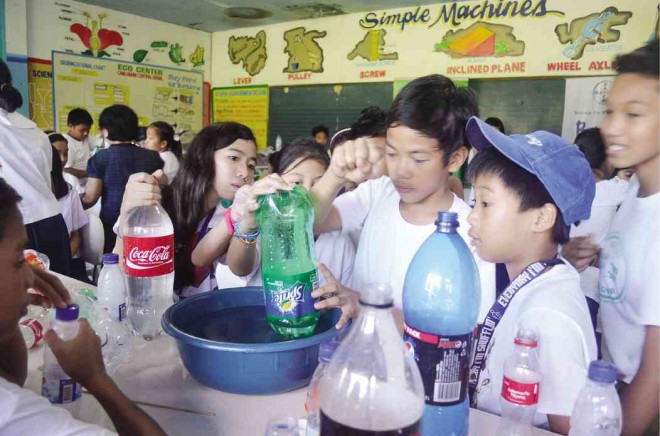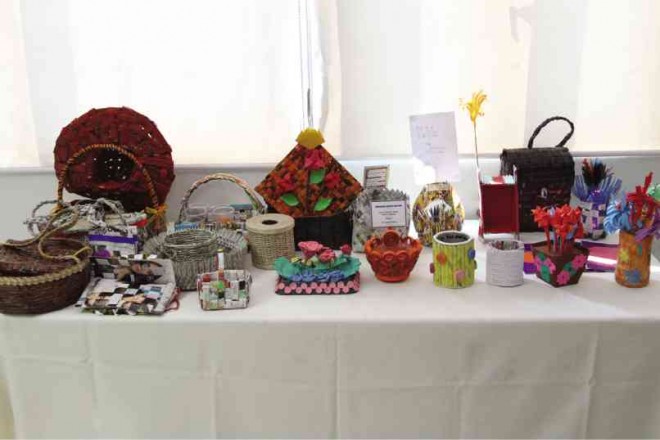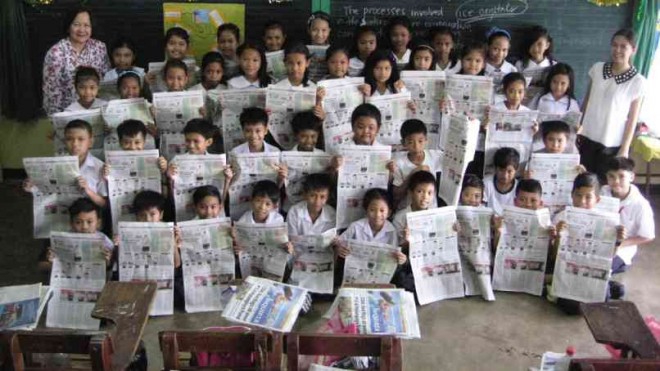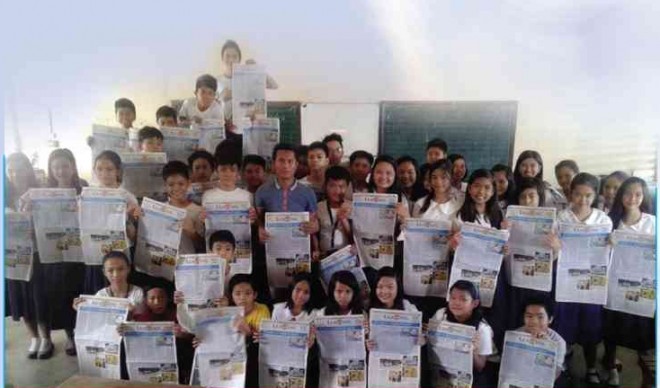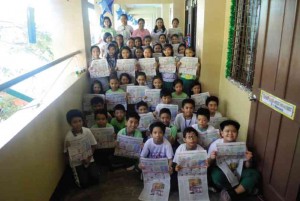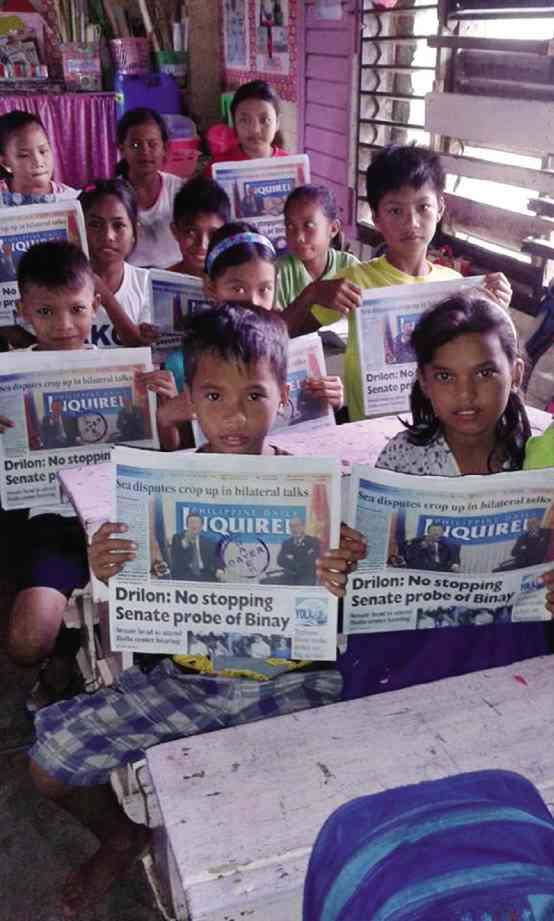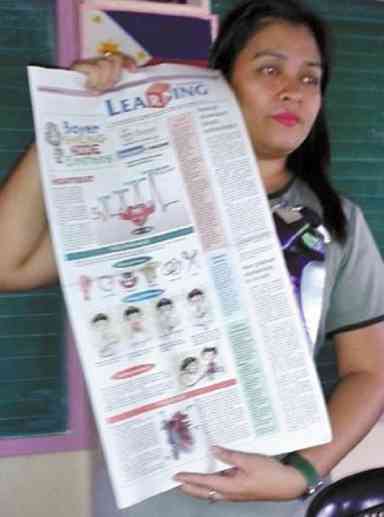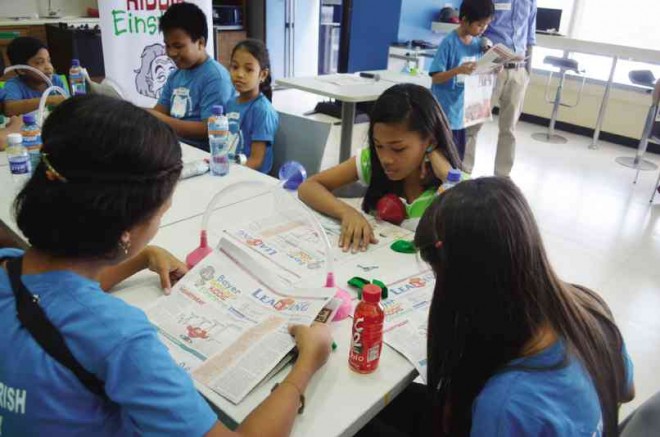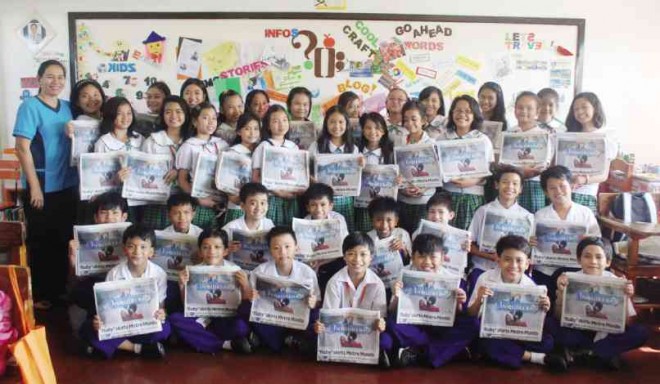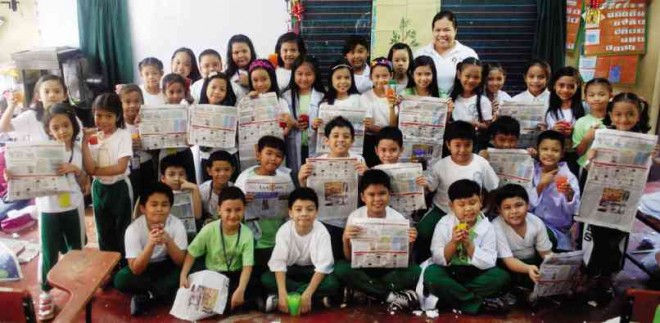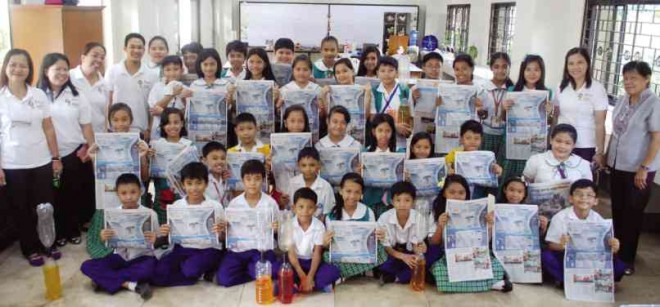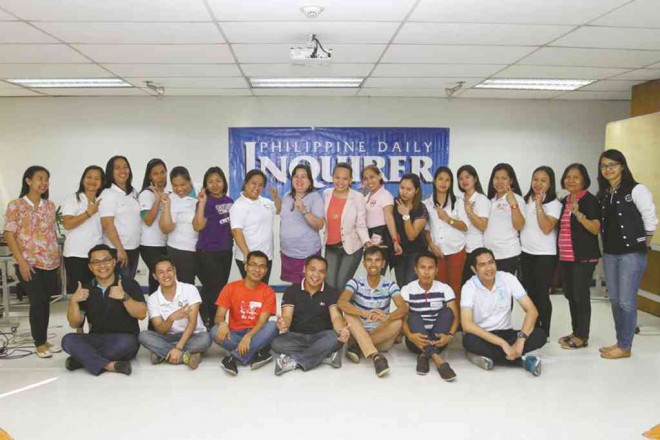Hands-on learning leads to smiles, sense of wonder
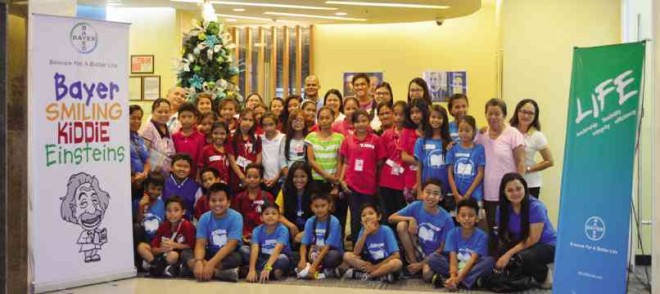
YOUNG scholars of Phil-Asia Foundation with Bayer Philippines employee-volunteers after a round of BSKE experiments at Bayer Business Services office in Taguig City
Who are you?” teacher Rezeale Fabreag asked her students at Isaac Lopez Integrated School.
“We are the Bayer Smiling Kiddie Einsteins (BSKE),” answered her young wards, some of whom went so far as to come to class wearing lab coats. This was day two of our school visits to observe the classes of our partner teachers.
Since we’ve had some success with our serial reading program for the English subject, we had been dreaming of serializing lessons for the Science subject. But how exactly do you teach Science so the kids don’t start yawning? That was our big concern.
To our luck, the folks at Bayer Philippines knew how. They had a lesson plan: Make it fun.
So in November last year, the multinational company launched the BSKE program, in partnership with Inquirer in Education (IIE), at the Exploreum in the Mall of Asia.
Article continues after this advertisementShortly thereafter, we came out in this section with the first in a series of science experiments especially adapted for elementary students. That went on for six Tuesdays.
Article continues after this advertisementScience teachers who had the good sense to sign up with us as our partners received copies of the Inquirer, paid for by Bayer, so they could teach the series and their students could perform the experiments. Bayer also cosponsored the briefing and debriefing sessions for our 30 partner teachers.
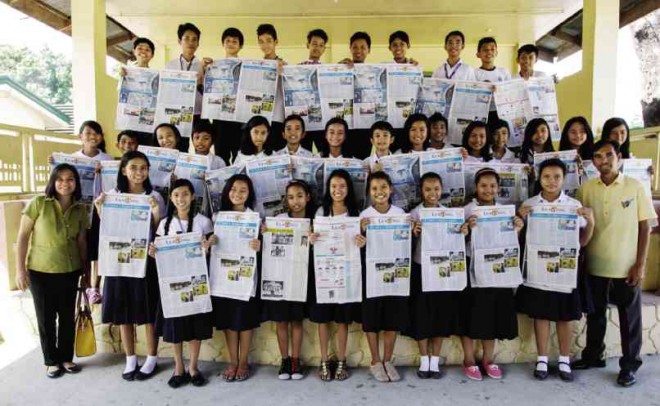
RANDY G. Salvador with students and principal Marites Bayani at St. Vincent of Quebiawan Integrated School. Leo Sabangan II
“We thank the Learning section for roping us in,” said Matthias Eggert, managing director of Bayer Philippines. “As a life science company, the goal of Bayer for this program was simple—to make the elementary students more interested in Science through hands-on experiments that were equally educational and fun.”
Inquirer is equally thankful for the collaboration. The BSKE experiments tied in smoothly with the IIE goal of using the newspaper to make the connection between classroom learning and real life.
First, the materials the students needed for the experiments were everyday household things, such as soda bottles, funnels, diapers, charcoal, soil and water—lots and lots of water.
Second, the subject matter was always something familiar. Twice it was about a human body part. Another two were related to plants. One was about the weather (or should we say natural disaster?), and one was about balloons—those colorful children’s party must-haves.
All from public elementary schools, except for the two who were connected with the Lombosco Academy Foundation, our partner teachers said the most enjoyable part of teaching the series was watching their kids have fun while learning.
The “Tornado in a Bottle” experiment turned out to be the runaway favorite of the students (the IIE team, too). It was hard not to fall in love with the tornado experiment. The kids were mesmerized by the mini vortex that formed in their inverted soda bottles.
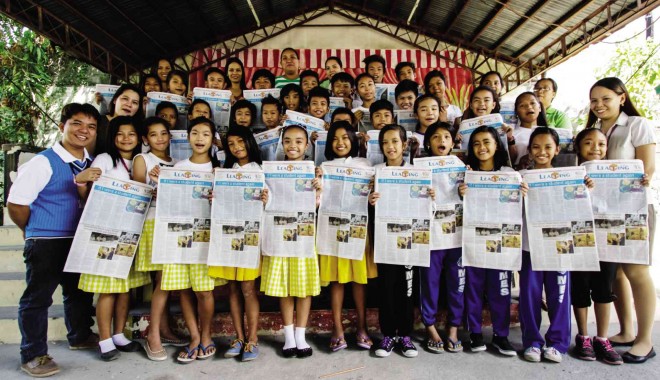
BRENDA Rose H. Munoz with students and principal Rodel Lintag at Mansgold Elementary School LEO SABANGAN II
The lesson on lung capacity was a close runner-up. “It was a fun and wet experiment. The children were amazed to find out how much air their lungs could hold,” said Michaela Espiritu, Grade 5 Science teacher at Maximo Estrella Elementary School.
What was amusing was that even the non-Science teachers joined in so they could test their lung power, reported Limmuel Opao of Ninoy Aquino Elementary School.
The BSKE experiments allowed teachers to engage young learners in experiences that evoked a sense of wonder. Hopefully, all the teachers who used the series in their classrooms also helped the students reflect on the scientific source of such wonder.
Eggert said he was happy with the response the teachers and the schools gave the series as well as the support from the Bayer employees who volunteered to guide the conduct of the experiments on two separate occasions. One was for the students at Canlubang Elementary School in Laguna where the company has its main facilities. The other was at Bayer Business Services office in Taguig City, with 40 scholars of the Phil-Asia Foundation from the Jose Cardones, EM’s Signal Village, Kapitan Eddie Reyes and Zapote Elementary Schools.
The series also integrated newspaper reading in the lesson, which is an IIE objective. One student activity, for instance led the class to the Sports section. Students were asked to list the equipment needed to be able play the individual and team sports that were written about in the paper. This was in relation to the flexibility of polymers in the balloon experiment.
According to the teachers, no concept in the series was too complex for the students to do and no material was unaffordable or unavailable.
Reynaldo “Cedi” Cutanda, communications and public affairs manager for Bayer Philippines, was relieved to hear this during the teachers’ debriefing because it validated the times he and other Bayer employees repeatedly performed the experiments on their own just to be sure that these actually worked.
What proved to be the biggest challenge for the teachers? Finding the time to do the experiments in class when school activities had begun to multiply in the weeks leading up to the Christmas break.
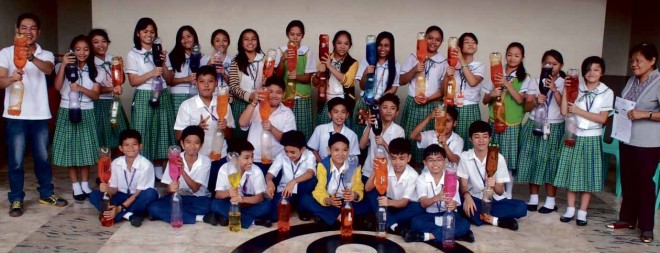
JAMES Quintayo and principal Marilyn Macalma with students and their “Tornado in a Bottle” experiment at Pembo Elementary School ARNOLD ALMACEN
Consequently, the teachers suggested that the series take the school year calendar into consideration. They requested that future experiments be aligned with the grade level’s Science curriculum.
“We will miss the series,” said Maribel Gregorio Advincula of Zapote Elementary School.
The good news for her—and all Science teachers who prefer to engage their students in experiential learning—is that the series will be back in the next school year.
“The smiles on the kids’ faces, the amazement in their eyes, and the enthusiasm to learn more about Science are enough reasons for us to continue doing the Bayer Smiling Kiddie Einsteins program and strengthen our partnerships,” said Eggert.
Fabreag’s students will be a year older when the series next rolls out, but they will still be very much the Bayer Smiling Kiddie Einsteins they were when the Science series debuted.
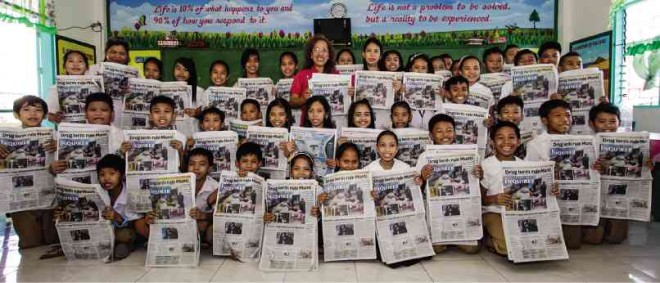
LORIFE Jean L. Viesca and Lovely M. Gidayawan with students at San Juan Elementary School ARNOLD ALMACEN

MARIBEL G. Advincula, Francia C. Beriso and Monette de Leon with students at Zapote Elementary School LEO SABANGAN II


